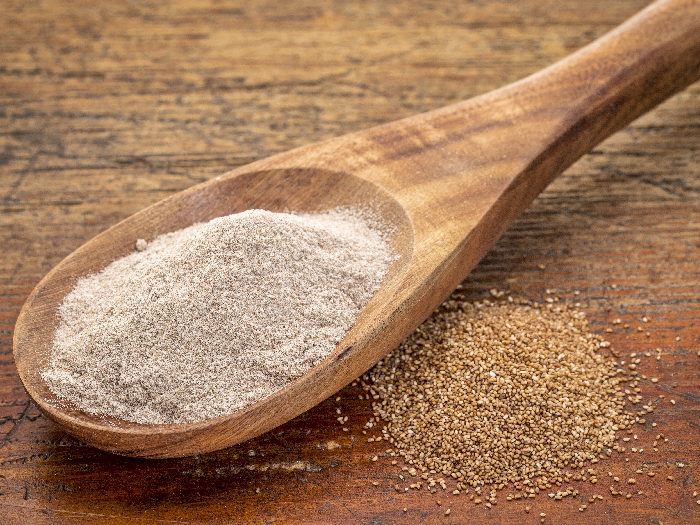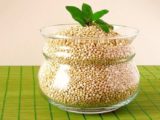Ancient grains, like quinoa, einkorn, farro, spelt, amaranth, and teff, which were long forgotten are gaining popularity due to their health benefits. Quinoa, teff, and amaranth rank even higher as they are gluten-free. Teff is an old civilization grain that has been grown in Ethiopia for centuries. The grain and its flour are now being rediscovered and used in different parts of the world.
What is Teff Flour?
Teff flour is made by grinding teff grains, an ancient East African cereal grass. Teff grains are tiny and about “1/150 the size of wheat kernels”, according to the Oldways Whole Grain Council, [1]Massachusetts, US. Because the grains are so tiny, the flour is almost always whole grain flour. Teff is mainly cultivated in Ethiopia, where it is used to make injera, a flat pancake that is served with meat or vegetable curries, boiled eggs, and greens. It is also cultivated and used in parts of India, the US, Germany, Spain, and the Netherlands. With more and more people becoming conscious of their food choices and food sensitivities, whole grains like teff that are gluten-free are seeing a resurgence in grocery market shelves across the world. [2]
According to the USDA Food Central, 1 cup of cooked teff has 255 calories. It is packed with minerals such as calcium, iron, magnesium, phosphorus, potassium, and sodium. It is high in dietary fiber and has zero cholesterol. [3]

Health Benefits of Teff Flour
Let us look at the most important health benefits of teff flour.
Gluten-free
This flour can be a healthy gluten-free option for people with celiac disease and with gluten sensitivity. In people with celiac disease, gluten can trigger an immune response that can damage the lining of the small intestines. [4]
Fiber-rich Flour
Teff flour is a healthier choice for baking bread, muffins, and cakes as compared to the usual all-purpose flour. A cup of branded teff flour has 8g of dietary fiber, which is double the amount of fiber in unbleached white all-purpose flour. Fiber, according to a report in The Nutrition Source at Harvard T.H. Chan School of Public Health, helps regulate the body’s use of sugars. This, in turn, helps keep hunger and blood sugar levels in check. [5] [6] [7]
Good Source of Calcium
One cup of cooked teff offers 123 mg of calcium, which is more than most grains and equivalent to almost half a cup of whole milk. The recommended dietary allowance for calcium is 1,000-1,200 mg/day for adults. Proper intake of calcium ensures healthy bone and teeth development in the body. [8]
How To Use Teff Flour?
Teff flour can be used to make the traditional soft and spongy Ethiopian bread, injera. If you are making injera for the first time, it is better to use a mix of teff flour and wheat flour or all-purpose flour because it is easier to handle. Injera is used to scoop up curries or as a side dish to spicy boiled eggs or scrambled eggs. You can also get innovative – use it as crepes with a sweet or savory filling.
Teff flour can also be used as a gluten-free thickening agent. It is best used for baking. You can substitute this whole grain flour for about 25 percent of the white flour called for in baked goods recipes such as muffins, cakes, and bread. You will get a distinctive nutty flavor in the final baked product if you use a lot of teff flour.
So, put on your creative chef hat and experiment with teff flour in your kitchen!

